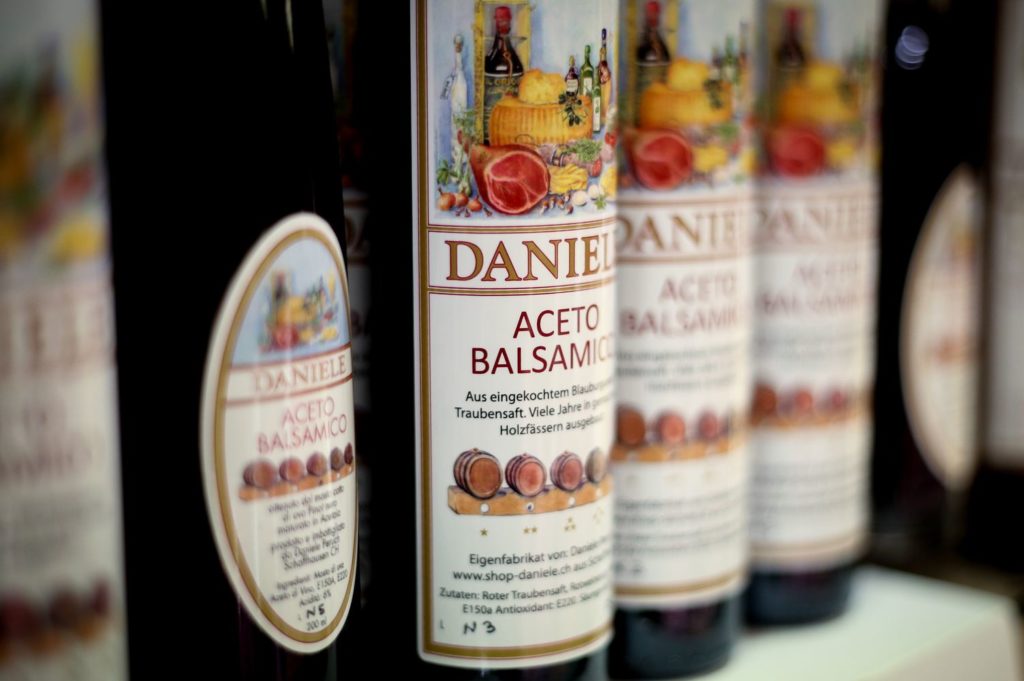
Made with love the traditional way, matured over time.
Balsamic vinegar can be made wherever there are grapes – you simply have to hit upon the idea and exercise plenty of patience to see it through. Schaffhausen resident Daniele Peruch had both 16 years ago – and, most importantly of all, discovered along the way that the grape varieties typical of his region are ideally suited to making balsamic vinegar.
The delicious scent of balsamic vinegar hits you as soon as you enter the Daniele acetaia (vinegar cellar). The walls are lined not only with numerous barriques but also with “batteries”, which are racks containing five or six small barrels of decreasing size. These play a pivotal role in the ageing process and make it possible to see how balsamic vinegar production actually works: The balsamic is continuously concentrated over the years (or even decades) until there is a small but intensely flavoured amount of the precious condiment left.
The vinegar must pass through all the little barrels in a battery before it comes of age: The first and largest barrel contains our one-star balsamic, which still has a high content of young vinegar. The quantity of liquid then decreases from barrel to barrel, with the vinegar becoming progressively more concentrated and syrupy. This is because water is lost during storage: During the summer, it evaporates due to the heat; during the winter, the cold causes the solid matter to deposit itself at the bottom (this is removed later). As a general rule, the older and more concentrated a balsamic vinegar gets, the more sumptuous it becomes. This maxim comes from Modena, where local producers would traditionally reserve a barrel of balsamic vinegar for every newborn baby, to be gifted to the child upon marriage as part of their dowry – which requires a minimum of 15 to 25 years in storage…
„The older and more concentrated a balsamic vinegar gets, the more sumptuous it becomes.”
Schaffhausen balsamic vinegar was born out of necessity: Local winegrowers producing an excess harvest of grapes at the end of the 1990s gave Daniele Peruch the idea of making balsamic vinegar from them. He experimented with and puzzled over the idea for many years, as his Italian competitors didn’t want to share their trade secrets with him. One of the things he found out was that using barrels made of different types of wood is essential to the ageing process: The liquid that will go on to become balsamic “flows through” barrels made out of acacia, cherry, oak and chestnut, all of which impart their own distinctive aromas to the vinegar. The courage to invest in his ideas and the patience to develop products of superior quality eventually bore fruit, finding Daniele a receptive audience and earning him the national “Prix d’innovation agricole” award.

